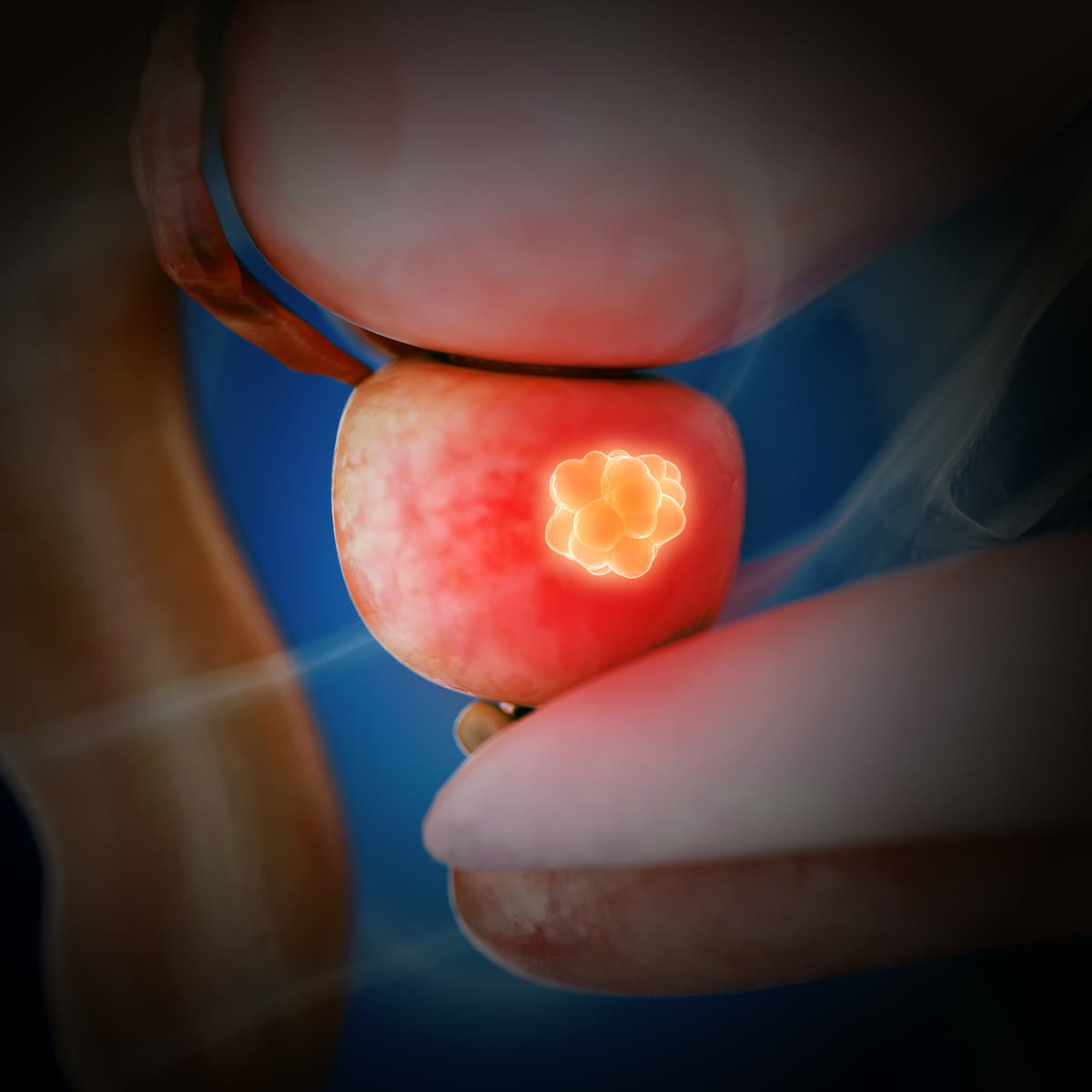177Lu-PSMA-I&T/223Ra Display Safety and Feasibility in Metastatic CRPC
The PSA response rate and radiographic PFS were similar with the 177Lu-based combination regimen vs the radiotracer alone in metastatic CRPC.
No treatment-related deaths occurred in the study, and most TRAEs were grades 1 or 2 in severity.

The addition of bone-seeking α-emitter radium-223 (223Ra) to lutetium-177[177Lu]Lu-PSMA-I&T (177Lu-PSMA-I&T) displayed feasibility and safety among patients with metastatic castration-resistant prostate cancer (CRPC), according to findings from a preliminary analysis of the phase 1/2 AlphaBet trial (NCT05383079) published in The Lancet Oncology.1
Among 37 patients enrolled to receive the combination regimen at a median follow-up of 13.3 months (IQR, 8.7-17.1), 5 (14%) patients were still undergoing treatment, and 14 (39%) were undergoing follow-up. Treatment delays occurred in 4 (11%) patients due to adverse effects (AEs), including 1 related to treatment. The treatment-related AE (TRAE) was a single grade 3 neutropenia event, with additional AEs including COVID-19 infection, urinary retention, and ischemic heart disease.
One patient experienced thrombocytopenia requiring a dose reduction of 177Lu-PSMA-I&T.
A total of 11 (31%) patients completed 6 cycles of 177Lu-PSMA-I&T and 223Ra, with 2 additional patients completing 6 cycles of 177Lu-PSMA-I&T. Half (50%) of patients experienced an early discontinuation of treatment, 11 (61%) of whom experienced unequivocal disease progression, and 3 (17%) of whom experienced AEs. AEs leading to dose discontinuation of both agents included thrombocytopenia in 2 (6%) patients and anemia in 1 (3%); 1 (3%) event of osteonecrosis of the jaw resulted in the discontinuation of 223Ra only.
A median of 4.0 cycles (IQR, 4.0-6.0) of each agent was administered. Additionally, the median radioactivity delivered by 177Lu-PSMA-I&T was 29.8 GBq (IQR, 29.5-44.2) and 30 MBq (IQR, 13-27) with 223Ra.
Grade 3/4 TRAEs occurred in 5 (14%) patients and included 4 (11%) grade 3 anemia events, 3 (9%) grade 3/4 neutropenia events, and 1 (3%) grade 4 leukopenia event. Non–clinically significant grade 3 lymphopenia occurred in 10 (28%) patients, and no febrile neutropenia events or fractures were observed. Two (6%) serious TRAEs were reported, both of which were grade 3 anemia events requiring blood transfusion.
No treatment-related deaths occurred on the study, and most TRAEs were grades 1 or 2 in severity. The most common TRAEs included anemia (67%), dry mouth (58%), leukopenia (58%), and thrombocytopenia (53%).
“[T]he combination of ¹⁷⁷Lu-PSMA-I&T and ²²³Ra in patients with metastatic castration- resistant prostate cancer is safe and feasible, with demonstrated antitumor activity. Given that both agents are widely commercially available already, with no requirement for additional radioprotective measures, infrastructure is already in place to evaluate this combination further on a larger scale,” lead investigator Louise Kostos, MBBS, medical oncologist at the Peter MacCallum Cancer Centre in Melbourne, Australia, said in the publication with study coinvestigators. “These results should be validated in large, prospective, and randomized trials evaluating novel α-emitting or β-emitting radioligand therapy combinations.”
The investigator-initiated, single-center study enrolled patients 18 years and older with progressive, metastatic CRPC per Prostate Cancer Clinical Trials Working Group 3 (PCWG3) criteria. To be eligible for study entry, patients must have also received prior treatment with at least 1 androgen receptor pathway inhibitor and must not have received any other prior anticancer treatment within 3 weeks of study start.
The phase 1 portion of the trial followed a traditional 3+3 dose escalation design using a fixed dose of ¹⁷⁷Lu-PSMA-I&T and 2 prespecified doses of ²²³Ra. The phase 2 portion of the study began once the maximum tolerated or administered dose was established.
Those enrolled received ¹⁷⁷Lu-PSMA-I&T at 7.4 GBq intravenously and 223Ra at 27.5 or 55.0 kkBq/kg every 6 weeks as outpatient therapy for a maximum of 6 cycles. Additionally, patients received concurrent androgen deprivation therapy, and bone antiresorptive therapy was mandated per local practice to mitigate an increased incidence of fractures observed with 223Ra in previous trials.
Patients enrolled on trial had a median age of 72.5 years (IQR, 67.0-78.0), a median time since diagnosis of 6.3 years (IQR, 3.7-13.9), and a median PSMA tumor volume of 281.3 mL (IQR, 81.4-484.9). Most patients had an ECOG performance status of 1 (50%), M1b staging (92%), and localized or locally advanced disease (61%). Additionally, a total of 47% of patients had a total Gleason score of 8 or greater, 64% had a PSMA mean standardized uptake value of less than 10, and 67% did not receive prior prostatectomy.
The most common prior therapies included enzalutamide (Xtandi, 64%), docetaxel (53%), and abiraterone (Zytiga, 31%). A total of 67% of patients received palliative radiotherapy.
The co–primary end points of the trial were the maximum tolerated or administered dose and prostate-specific antigen (PSA) response rate. Secondary end points included safety, radiographic progression-free survival (PFS), PSA PFS, overall survival, objective response rate (ORR), composite PFS, pain, and quality of life.
Additionally, activity analyses of 33 patients treated at the maximum tolerated dose of 223Ra revealed a reduction in PSA of at least 50% in 18 (55%; 95% CI, 36%-72%) patients, and of at least 90% in 6 (18%; 95% CI, 7%-35%) patients. Furthermore, among 10 (28%) patients treated on trial with measurable disease per RECIST v1.1 criteria, an ORR of 50% (n = 5) was observed, including 3 (30%; 95% CI, 7%-65%) partial responses and 2 (20%; 95% CI, 3%-56%) complete responses.
Reference
Kostos L, Puteau JP, Xie J, et al. Lutetium-177 [¹⁷⁷Lu]Lu-PSMA-I&T plus radium-223 in patients with metastatic castration-resistant prostate cancer (AlphaBet): an interim analysis of the investigator-initiated, single-centre, single-arm, phase 1/2 trial. Lancet Oncol. Published online October 18, 2025. doi:10.1016/S1470-2045(25)00559-5